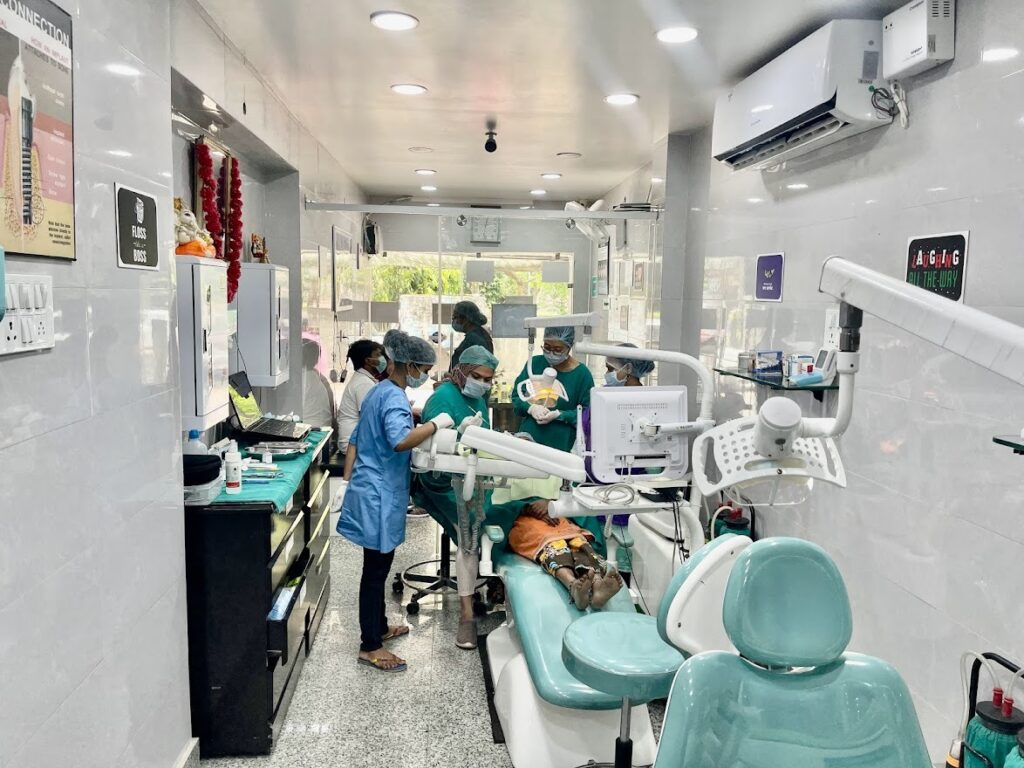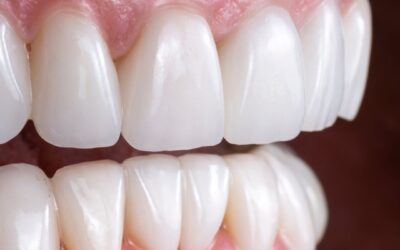
Overdentures get support and retention from a superstructure attached to the implants. This superstructure defines the character of the denture that can be provided. We differentiate between tissue-supported, tissue/implant-supported, and mainly implant-supported overdentures.
In tissue-supported overdentures, the retentive mechanism of choice is a magnet, a ball attachment, a locator attachment, or a conical crown. Tissue/implant-supported overdentures get their retention via a superstructure consisting of two implants interconnected by a bar attached to gold caps that in turn are screwed onto the implants. Implant-supported overdentures rest primarily superstructure connected to the implants. The superstructure is placed on at least four implants, to interconnect them.
Patients with an edentulous mandible may experience problems with conventional dentures, such as a lack of retention and problems concerning self-esteem. Any fixed dental prosthesis on implants or implant-supported overdenture increases patient satisfaction.
Furthermore, research has shown that a one-phase implant insertion technique can achieve the same good results as a two-phase technique. This would mean that one-phase technique is more patient-friendly, because a second surgical stage is no longer required.
SURGICAL GUIDE
A surgical guide to the edentulous mandible can be based on an existing functional denture or on a wax-up of the new dental prosthesis in the correct maxillomandible relationship in an articulator. Implants in the edentulous mandible intended to supporting an overdenture are inserted between the two mental foramina. They should be equidistant from the midline, and the inter-implant distance should be between 15 to 20 mm. When inserting four implants, the most distal one must be placed about 5mm mesially of the mental foramina.
TWO UNSPLINTED IMPLANTS AND AN OVERDENTURE
Two implants with ball and clip attachments should be adequate where the mandible has the height of at least 10 mm and a patient requests more stability and retention for complete denture. Two implants with ball attachments, Locater abutments, magnets or telescopic crown are most often used when the patient’s oral hygiene is a problem. An insufficient vertical dimension or a tapered shape alveolar ridge would lead to a bar design covering the frenulum of the tongue, thus impairing the function.
TWO SPLINTED IMPLANTS AND AN OVERDENTURE
With two implants interconnected by a bar as a treatment option, the implants are frequently placed at or mesially of the position of the canine teeth. The bar should be placed directly below the incisal edges of the lower teeth. This reduces the tendency of the mandibular denture to rotate around the fulcrum created between the two abutments. With a bar and clip on two implants, it is advisable not to use a round bar, since this facilitate denture rotation.
Benefits: Higher stability and retention of the overdenture
Limitation: Not applicable in the V-profile mandibles and where the residual height of the mandible is less than 10 mm. Oral hygiene is more demanding.
FOUR (OR MORE) SPLINTED IMPLANTS AND AN OVERDENTURE
Four implants and a bar and clip mesostructure are advisable when the alveolar bone height is less than 10 mm, since the bone-to-implant surface area becomes relatively limited when shorter implants are inserted. Four interconnected implants should also be inserted if the opposing jaw has (Partial) natural dentition.
FIXED DENTAL PROSTHESIS IN THE EDENTULOUS MANDIBLE
As a patient cannot remove the FDP, oral hygiene is important. Not all edentulous patients can be considered good candidates for FDP’s as they are not capable of their oral hygiene.
An FDP can only be considered if sufficient lip support can be provided. Diagnosis treatment planning, Crossbites, maxillomandibular relations , intermaxillary space, and so on must analyzed properly. As Prosthodontics dictates the amount, site, and type of implant, a mockup is essential.
For further information join the next batch of Comprehensive Implant Training in India:www.sachdevadentalcare.com or www.dentalcoursesdelhi.com
Regards : Dr.Prof .Rajat Sachdeva
+919818894041,01142464041

